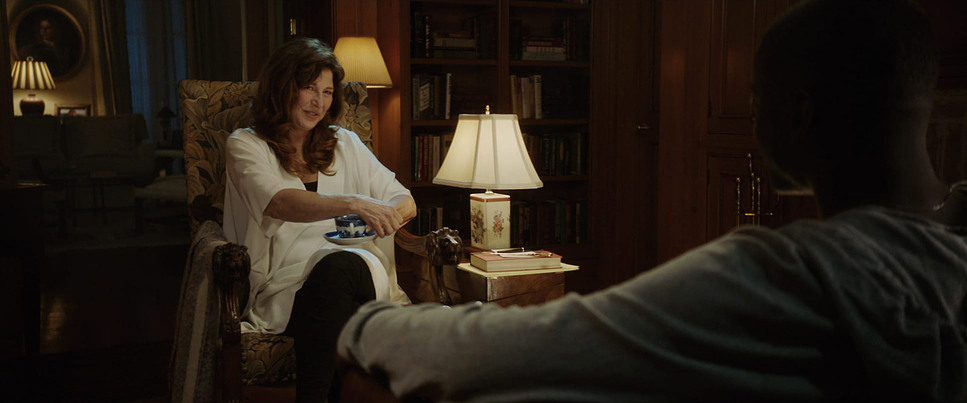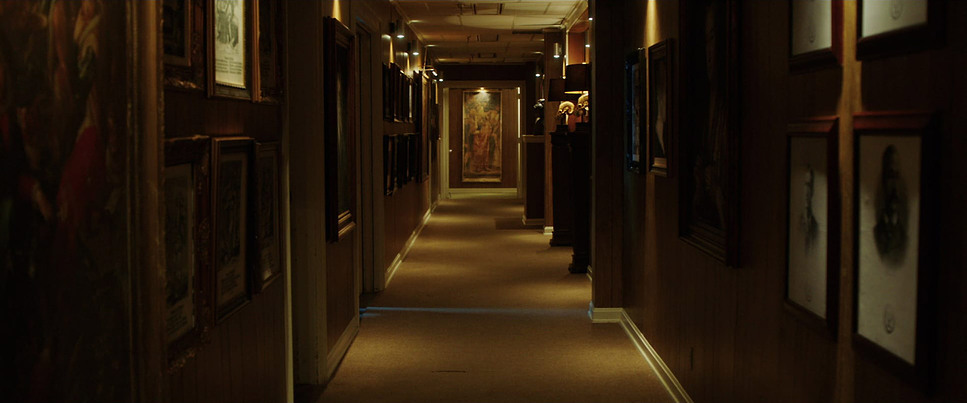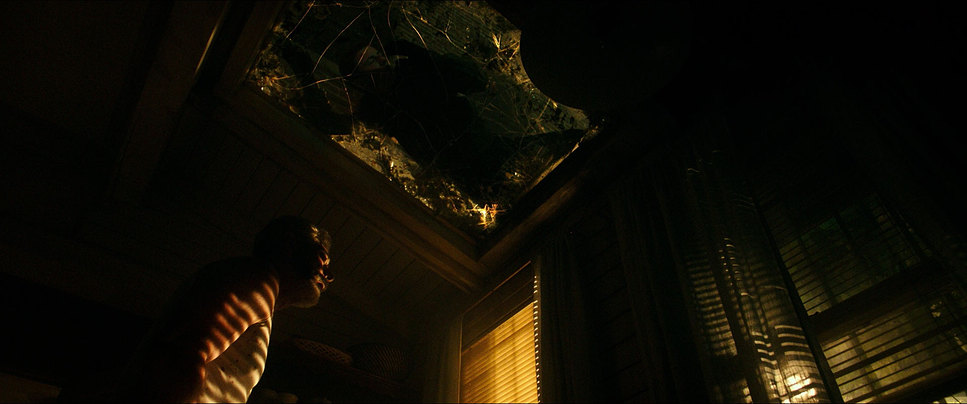A cinematographer may obsess over the most subtle differences of light, colour and framing, but their work has a massively defining impact on films. I came to appreciate this working as the cinematographer on a short university reproduction of the Netflix horror series The Haunting of Hill House. Working through the pre-production, shoot and post-production process gave me a deeper appreciation for the cinematic craft and allowed me to experiment with following my creative visions.

My work began with ideation for the production’s visual style with the director and the production designer. Rather than conforming to the often-gaudy genre conventions or horror, we decided on a look which was unsettlingly naturalistic.
Understanding our responsibility to render the director’s vision, the production designer and I began creating a realistic and understated atmosphere. We established a warm and earthy colour pallet that would subvert the cosiness of a home with eerie mystery and suspense. To create the right aesthetic, I began researching lighting design. I was particularly drawn to the work of Australian cinematographer Toby Oliver in Get Out (2017) and cinematographer Pedro Luque in Don’t Breathe (2016).




The eerily realistic vision of director Jordan Peele in his film Get Out shared elements with the ideas of my director Nelson. Cinematographer Toby Oliver effectively visualised this in Get Out’s night scenes set in the house, using layered lamp light to create a natural look that would ground the world in reality. Oliver skilfully used warm imagery to create false security – a technique I invoked in my own work.



I also drew from Pedro Luque’s cinematography in Don’t Breathe – expressionistic naturalism in which light sources are logical but effectively used to add drama. Luque unsettles audiences by lighting his scenes using moonlight from a window or by having residual light from another room flooding in through a doorway – techniques I adapted into my design.
From this research, I realised our stylistic vision with warm, high key lighting – using soft lights to create low contrasts between dark and bright areas. Lighting came naturally from well-positioned lamps and through windows, with only a few set lights. This design allowed me to layer light, play with shadows and reflections, and leave room for mystery. Such lighting illuminated the scene enough to ensure viewers could engage with characters while creating the feeling of not enough light to warm the eerie crevices of the cold, dark rooms.
The director and I led the storyboarding process, ensuring continuity and comprehensive coverage by using an establishing pan, several medium long, mid and close up shots, and some engaging POV angles, over the shoulder shots, tilts, and use of the dolly. Particularly, I found our use of the ‘frame in frame’ shots with mirrors were effective in playing with the idea of what is and isn’t real.
With the storyboard and lighting design finalised, I began liaising with the camera operator, Alana, over the shot list and lighting plan. We decided on:
- One 2000-watt floodlight,
- Two 300-watt floodlights,
- One LED light
- And an array of diffusers.
These would supplement and direct lamp lighting and enhance ‘moonlight’ streaming in from windows. I felt ready for the shoot with the equipment booked, shot list created, and storyboard finalised.
Onset, lighting went to plan as I layered warm lamplight, in conjunction with the LED light and light diffusers to maintain the semblance of classical Hollywood three-point lighting. In this way I ensured each shot had a key light source, a fill light source, and a backlight if I hadn’t decided to obscure the depth of field with shadow. Throughout the process, I was adjusting lighting based on feedback from the director and my camera operator to ensure a compelling and coherent aesthetic vision.


My set lighting appeared effective on screen, and most of my work in post-production with our editor, Angela, was fine-tuning for aesthetic unity. Firstly, we adjusted exposure, highlights, and shadows to ensure everything was adequately visible. As not all lights were the same temperature, we then began warming, cooling, and tinting specific scenes to ensure tonal consistency. We had to cool some shots lit with a slightly orange lamp by the doorway, and warm shots in the kitchen, which had a white LED light undertone. Our editor did an excellent job bringing the scene together, and it was a smooth process to work with her on the colour grade in the picture post before our sound recordist, Hamish, finalised the audio.
My group shared the exported versions on our group chat, and we all suggested improvements – from cut adjustments to music choice – until everyone was satisfied.
We achieved a high distinction for our work and I’ve absolutely developed a newfound respect for cinematographers. I can’t wait to work on another production!
[…] with… my degree! I’ve loved learning more about media production – trying out cinematography and experimenting with video […]